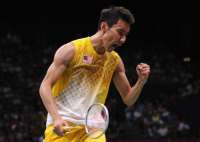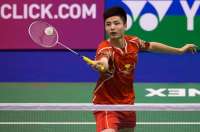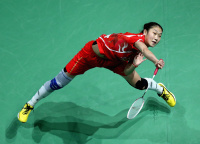ABOUT

OUR HISTORY
In the 5th century BC, the people in china then played a game called ti jian zi. A direct translation from this word 'ti jian zi' is kicking the shuttle. As the name suggest, the objective of the game is to keep the shuttle from hitting the ground without using hand. Whether this sport has anything to do with the History of Badminton is up for debate. It was however the first game that uses a Shuttle.
About five centuries later, a game named Battledore and Shuttlecockwas played in china, Japan, India and Greece. This is a game where you use the Battledore (a paddle) to hit the Shuttlecock back and forth. By the 16th century, it has become a popular game among children in England. In Europe this game was known as jeu de volant to them. In the 1860s, a game named Poona was played in India. This game is much like the Battledore and Shuttlecock but with an added net. The British army learned this game in India and took the equipments back to England during the 1870s.
In 1873, the Duke of Beaufort held a lawn party in his country place, Badminton. A game of Poona was played on that day and became popular among the British society's elite. The new party sport became known as "the Badminton game". In 1877, the Bath Badminton Club was formed and developed the first official set of rules.
The International Badminton Federation (IBF) was formed in 1934 with 9 founding members. England ,Ireland ,Scotland, Wales ,Denmark, Holland, Canada, New Zealand. France
Since then, major international tournaments like the Thomas Cup (Men)and Uber Cup (Women) were held. Badminton was officially granted Olympic status in the 1992 Barcelona Games. From 9 founding members, IBF now have over 150 member countries. The future of Badminton looks bright indeed.
About five centuries later, a game named Battledore and Shuttlecockwas played in china, Japan, India and Greece. This is a game where you use the Battledore (a paddle) to hit the Shuttlecock back and forth. By the 16th century, it has become a popular game among children in England. In Europe this game was known as jeu de volant to them. In the 1860s, a game named Poona was played in India. This game is much like the Battledore and Shuttlecock but with an added net. The British army learned this game in India and took the equipments back to England during the 1870s.
In 1873, the Duke of Beaufort held a lawn party in his country place, Badminton. A game of Poona was played on that day and became popular among the British society's elite. The new party sport became known as "the Badminton game". In 1877, the Bath Badminton Club was formed and developed the first official set of rules.
The International Badminton Federation (IBF) was formed in 1934 with 9 founding members. England ,Ireland ,Scotland, Wales ,Denmark, Holland, Canada, New Zealand. France
Since then, major international tournaments like the Thomas Cup (Men)and Uber Cup (Women) were held. Badminton was officially granted Olympic status in the 1992 Barcelona Games. From 9 founding members, IBF now have over 150 member countries. The future of Badminton looks bright indeed.

OUR COACHES
OUR PHILOSOPHY
-
 Lee Chong WeiMalaysian great Lee Chong Wei never fails to impress. In yet another fabulous season, Lee captured four titles and in the process, climbed back to where he belonged once – the top of the world. He had been building form from the end of last year when he reigned supreme at three back-to-back Superseries events – the French Open, the China Open and the Hong Kong Open.
Lee Chong WeiMalaysian great Lee Chong Wei never fails to impress. In yet another fabulous season, Lee captured four titles and in the process, climbed back to where he belonged once – the top of the world. He had been building form from the end of last year when he reigned supreme at three back-to-back Superseries events – the French Open, the China Open and the Hong Kong Open. -
 Viktor AxelsenThe highly-talented Viktor Axelsen came into his own in 2016, putting together the most consistent as well as the most memorable season of his young career. The 22-year-old, touted as a future world champion for a long time, finally broke his Superseries duck after six earlier failures by winning the biggest of them all – the Dubai World Superseries Finals.
Viktor AxelsenThe highly-talented Viktor Axelsen came into his own in 2016, putting together the most consistent as well as the most memorable season of his young career. The 22-year-old, touted as a future world champion for a long time, finally broke his Superseries duck after six earlier failures by winning the biggest of them all – the Dubai World Superseries Finals. -
 Shi YuqiChina’s next generation is already following in the footsteps of Lin Dan and Chen Long. 20-year-old Shi Yuqi had a prolific junior career, winning the Youth Olympics, the Asian Junior Championships, apart from a silver medal at the World Junior Championships in 2014.
Shi YuqiChina’s next generation is already following in the footsteps of Lin Dan and Chen Long. 20-year-old Shi Yuqi had a prolific junior career, winning the Youth Olympics, the Asian Junior Championships, apart from a silver medal at the World Junior Championships in 2014. -
 Sun YuThe baton has passed from China’s irrepressible trio of Li Xuerui, Wang Yihan and Wang Shixian to the next generation. With Yihan and Shixian retiring this year and Xuerui sustaining an injury at Rio, it was left to the rising brigade to carry the torch in Chinese women’s singles badminton.
Sun YuThe baton has passed from China’s irrepressible trio of Li Xuerui, Wang Yihan and Wang Shixian to the next generation. With Yihan and Shixian retiring this year and Xuerui sustaining an injury at Rio, it was left to the rising brigade to carry the torch in Chinese women’s singles badminton.
Teaching Progression for Learning Badminton Skills
Start by performing a skill without movement on the court. If necessary, further isolate the skill.
Perform the skill with movement. Move from the base to where the skill is to be performed, and stop after completing the skill.
Repeat the skill with movement many times.
Incopporate the skill with a know skill into a preset drill.
Perform the skill under varying conditions.
Perform the skill in gamelike situations
Perform the skill with movement. Move from the base to where the skill is to be performed, and stop after completing the skill.
Repeat the skill with movement many times.
Incopporate the skill with a know skill into a preset drill.
Perform the skill under varying conditions.
Perform the skill in gamelike situations
Breakdowns to Explain Technique for Every Stroke
- grip
- feet
- reacquet preparation
- body position
- backswing
- forward motion
- body weight transfer
- contact point
- follow-through
- recover
- feet
- reacquet preparation
- body position
- backswing
- forward motion
- body weight transfer
- contact point
- follow-through
- recover
